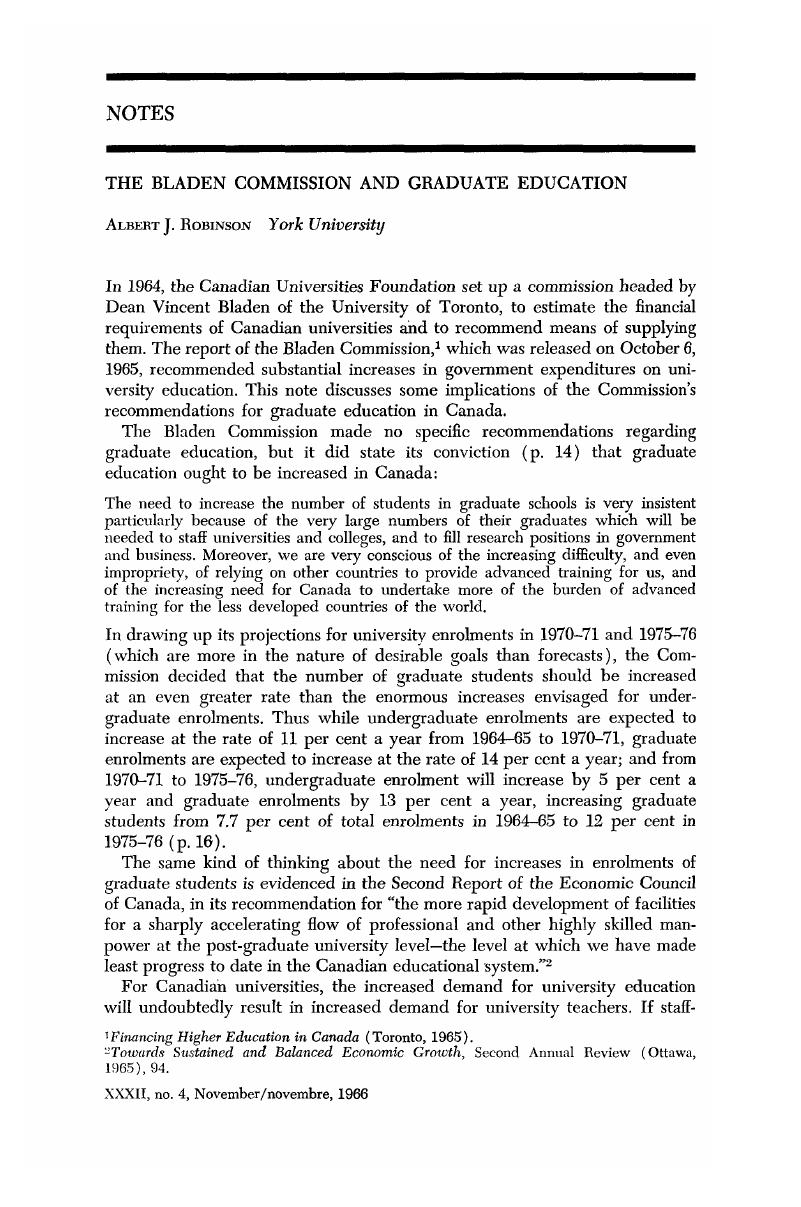No CrossRef data available.
Article contents
The Bladen Commission and Graduate Education
Published online by Cambridge University Press: 07 November 2014
Abstract

- Type
- Notes
- Information
- Canadian Journal of Economics and Political Science/Revue canadienne de economiques et science politique , Volume 32 , Issue 4 , November 1966 , pp. 520 - 525
- Copyright
- Copyright © Canadian Political Science Association 1966
References
1 Financing Higher Education in Canada (Toronto, 1965).Google Scholar
2 Towards Sustained and Balanced Economic Growth, Second Annual Review (Ottawa, 1965), 94.Google Scholar
3 Dominion Bureau of Statistics, Degrees Held by Canadian University Teachers, Part I, 1963–64 (Ottawa, 1965), 17.Google Scholar
4 Data supplied by Dr. E. F. Sheffield, Association of Universities and Colleges of Canada, Ottawa.
5 Of the graduate students who complete their PhD's in Canada, Thompson estimates that in the sciences less than one third join university faculties. Thompson, W. P., “The Number of University Teachers: Needs & Prospects,” CAUT Bulletin, 12 (12, 1963), 17–20.Google Scholar The proportion may be higher in non-science faculties. Science faculties account for about half of the total number of university teachers.
6 According to T. W. Schultz' study, average costs per student per year of elementary, high school, and college or university are in the ratio 1: 4: 10. The Economic Value of Education (New York 1963), 28–29.Google Scholar At the university level, Allan Cartter suggests that average costs per student in the first two undergraduate years, in upper class years, and in graduate school are in the ratio 1: 1½: 3 to 5. Cartter, Allan M., “Economics of the University”, American Economic Review, LV (05, 1965), 484–5.Google Scholar These estimates exclude foregone earnings, which if included would increase costs at the higher levels of education relative to the lower levels.
7 For example, by the generous provision of graduate scholarships by the federal government.
8 In 1960–61, foreign students made up 6.2 per cent of Canadian enrolments, compared with 10 per cent in Great Britain and 1.5 per cent in the United States. If all the Canadian graduate students projected by the Bladen Commission went to the United States for graduate training, they would make up about 1 per cent of the US enrolments projected by the US Office of Education for 1970 and 1975.




